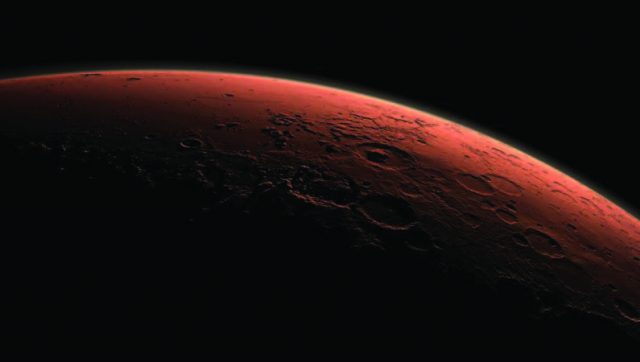LONDON (TIP): In a big blow to plans of colonizing the Red planet, scientists have confirmed that humans won’t last more than 68 days in Mars with present day technology. Researchers have said that an oppressive environment would suffocate the first settler within an estimated 68 days. The non-profit company Mars One announced plans to establish the first human settlement on Mars by 2025. Solar panel powered huts is expected to supply the colony’s electricity, while a system to extract water from the soil would supply drinking water.
But engineers at MIT say the project may have to take a step back, at least to reconsider the mission’s technical feasibility. The MIT researchers developed a detailed settlementanalysis tool to assess the feasibility of the Mars One mission and found that new technologies will be needed to keep humans alive on Mars. For example, if all food is obtained from locally grown crops, as Mars One envisions, the vegetation would produce unsafe levels of oxygen, which would set off a series of events that would eventually cause human inhabitants to suffocate.
To avoid this scenario, a system to remove excess oxygen would have to be implemented – a technology that has not yet been developed for use in space. Similarly, the Mars Phoenix lander discovered evidence of ice on the Martian surface in 2008, suggesting that future settlers might be able to melt ice for drinking water – another Mars One goal. But according to the MIT analysis, current technologies designed to bake water from soil are not yet ready for deployment, particularly in space.
The team also performed an integrated analysis of spareparts resupply – how many spare parts would have to be delivered to a Martian colony at each opportunity to keep it going. The researchers found that as the colony grows, spare parts would quickly dominate future deliveries to Mars, making up as much as 62% of payloads from Earth. As for the actual voyage to Mars, the team also calculated the number of rockets required to establish the first four settlers and subsequent crews on the planet, as well as the journey’s cost. According to the Mars One plan, six Falcon Heavy rockets would be required to send up initial supplies, before the astronauts’ arrival. But the MIT assessment found that number to be “overly optimistic”.
The team determined that the needed supplies would instead require 15 Falcon Heavy rockets. The transportation cost for this leg of the mission alone, combined with the astronauts’ launch, would be $4.5 billion – a cost that would grow with additional crews and supplies to Mars. It would also take seven months to get to Mars each time. Olivier de Weck, an MIT professor of aeronautics and astronautics and engineering systems says “We’re not saying, black and white, Mars One is infeasible. But we do think it’s not really feasible under the assumptions they’ve made.
We’re pointing to technologies that could be helpful to invest in with high priority, to move them along the feasibility path. One of the great insights we were able to get was just how hard it is to pull this mission off”. Graduate student Sydney Do simulated the day-to-day life of a Mars colonist. Based on the typical work schedule, activity levels, and metabolic rates of astronauts on the International Space Station (ISS), Do estimated that a settler would have to consume about 3,040 calories daily to stay alive and healthy on Mars. He then determined crops that would provide a reasonably balanced diet, including beans, lettuce, peanuts, potatoes and rice.
Do calculated that producing enough of these crops to sustain astronauts over the long term would require about 200 square meters of growing area, compared with Mars One’s estimate of 50 square meters. If, as the project plans, crops are cultivated within the settlers’ habitat, Do found that they would produce unsafe levels of oxygen that would exceed fire safety thresholds, requiring continuous introduction of nitrogen to reduce the oxygen level. Owens points to technologies such as 3-D printing, which may enable settlers to manufacture spare parts on Mars.
But the technology as it exists today is not advanced enough to reproduce the exact dimensions and functions of many space-rated parts. In 2012, the “Mars One” project, led by a Dutch non-profit, announced plans to establish the first human colony on the Red Planet by 2025. The mission would initially send four astronauts on a one-way trip to Mars, where they would spend the rest of their lives building the first permanent human settlement.
HUMANS WON’T LAST MORE THAN 68 DAYS ON MARS: MIT
